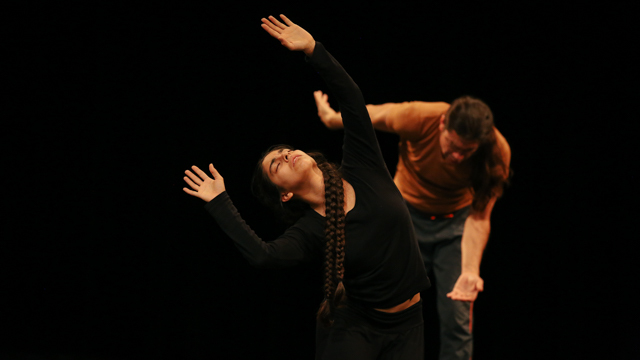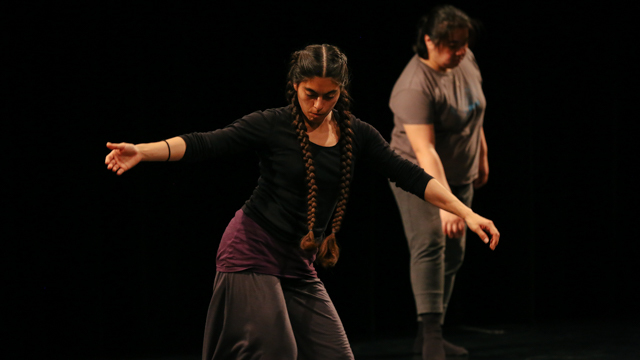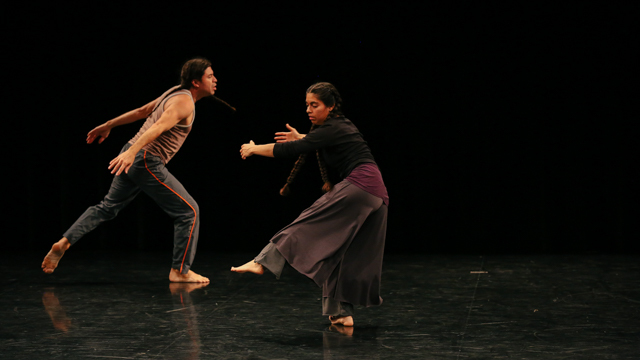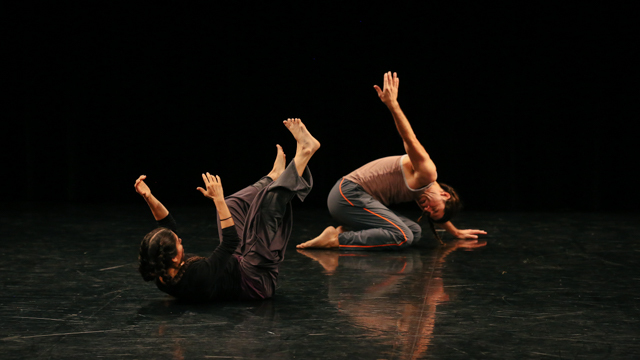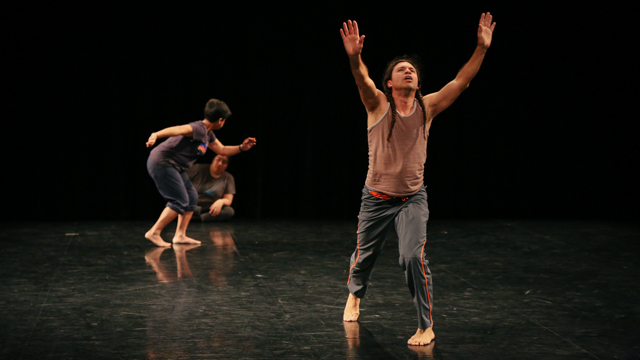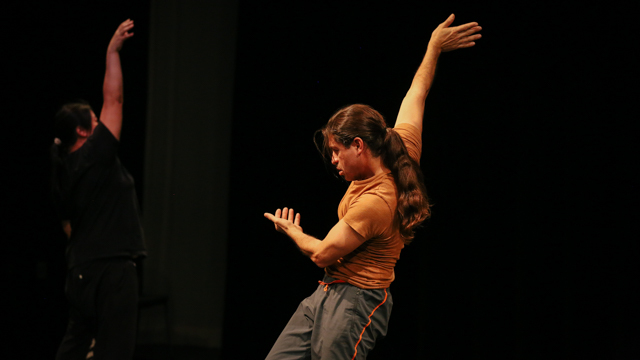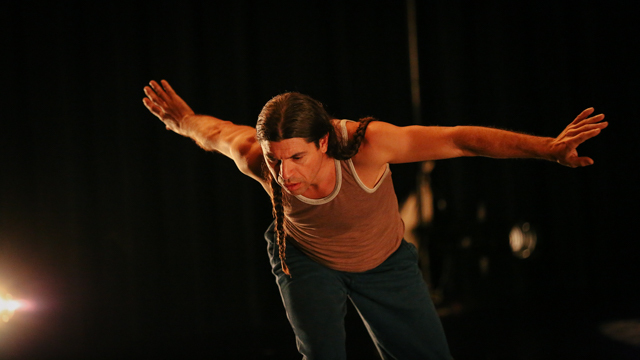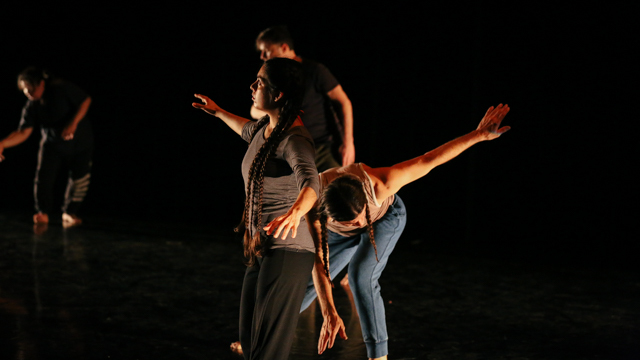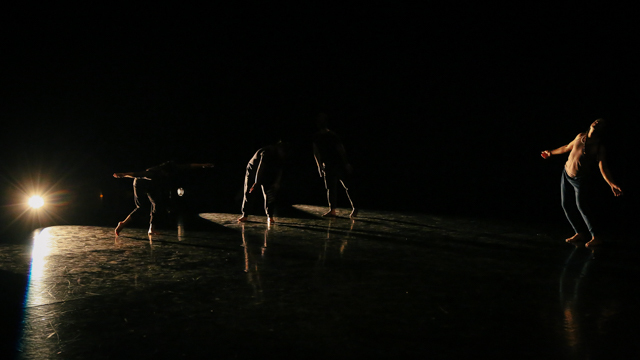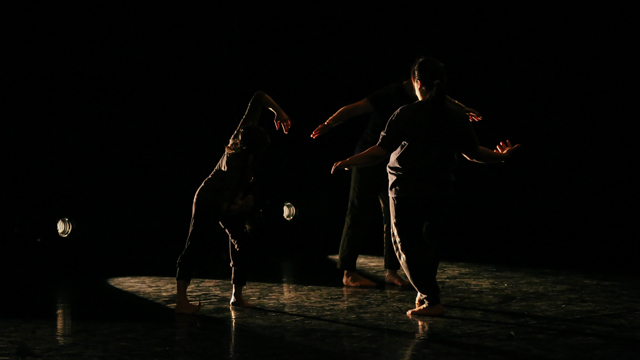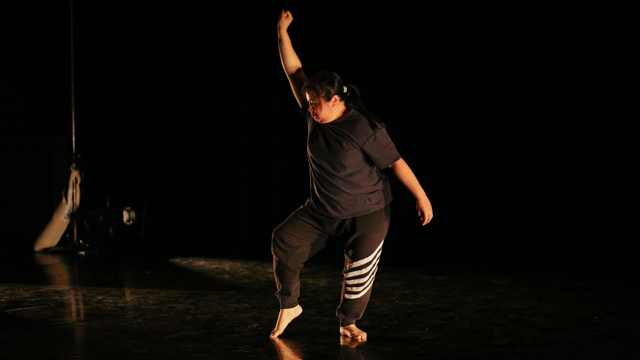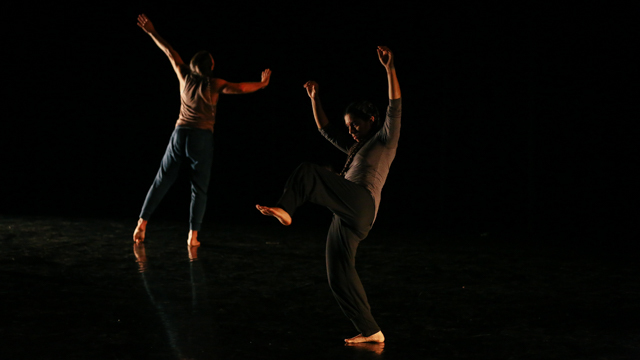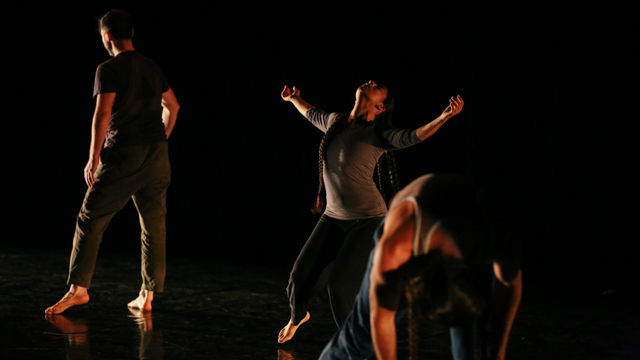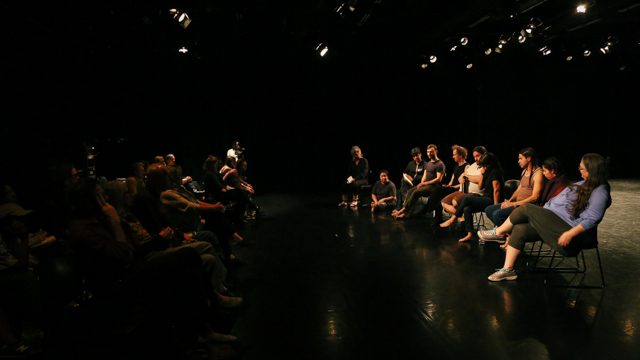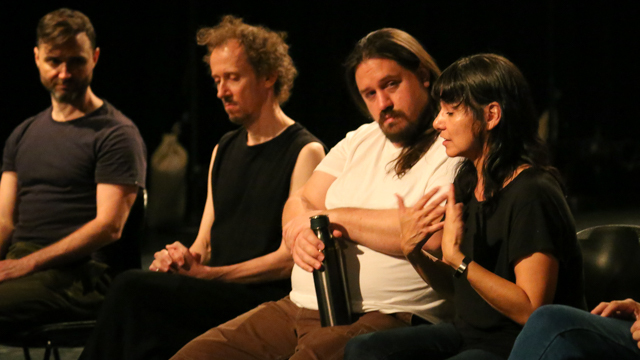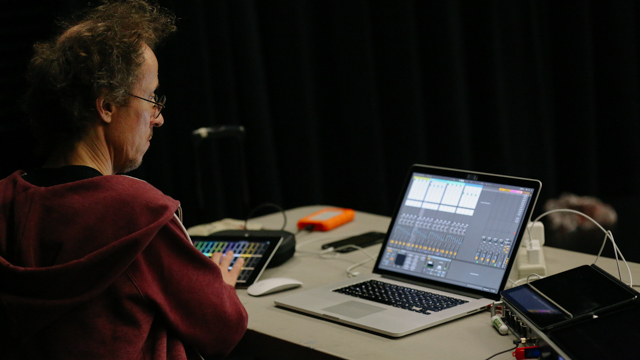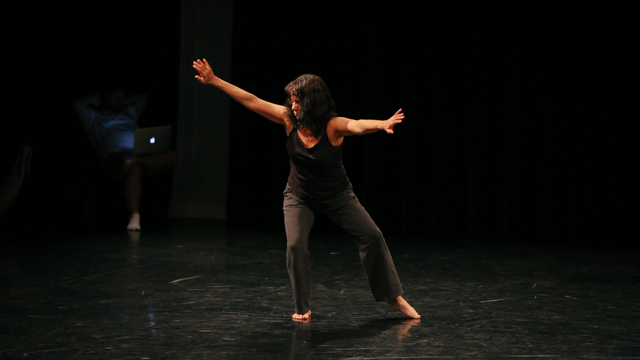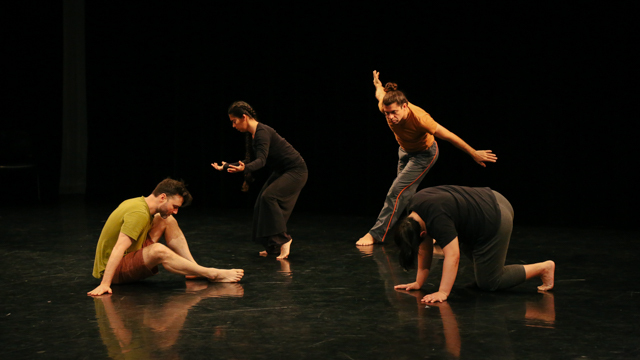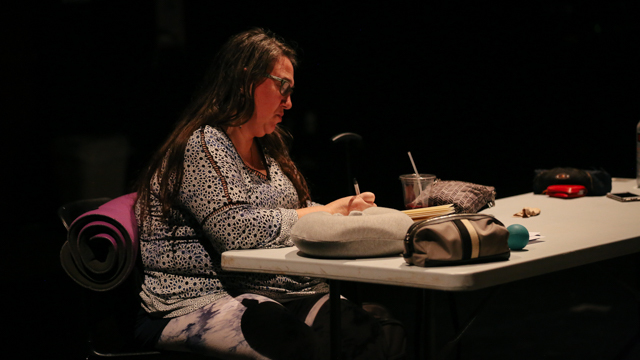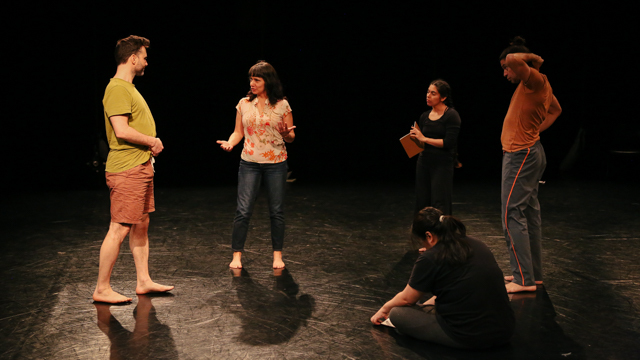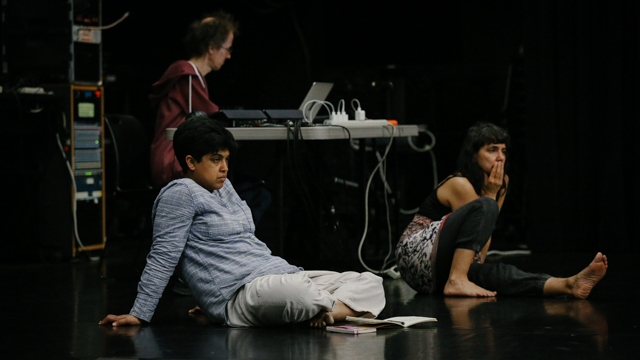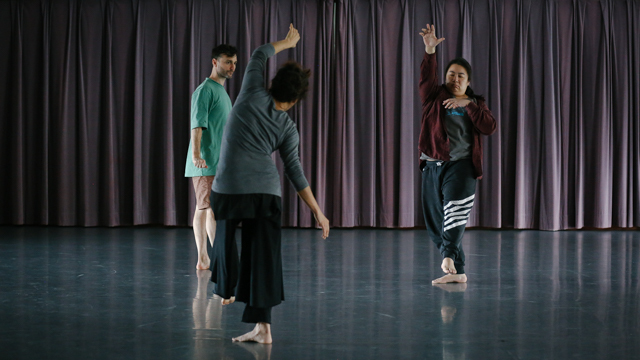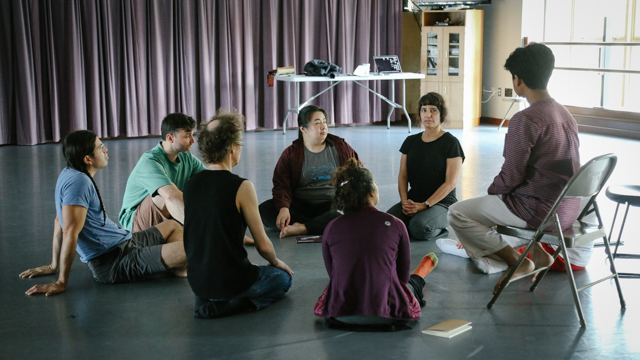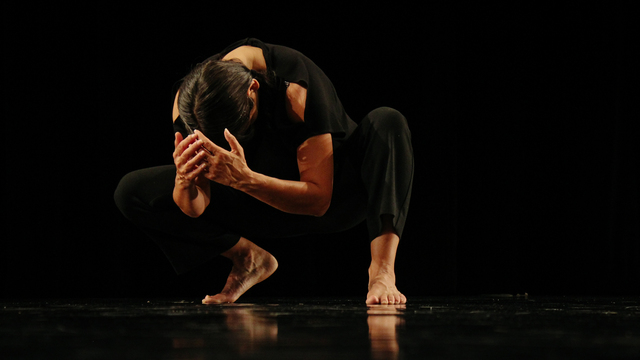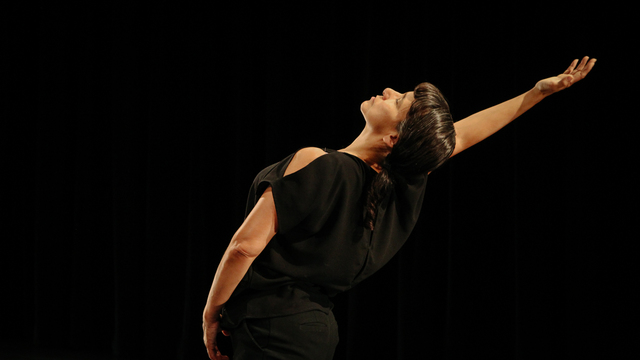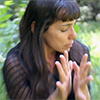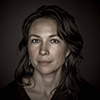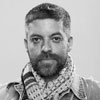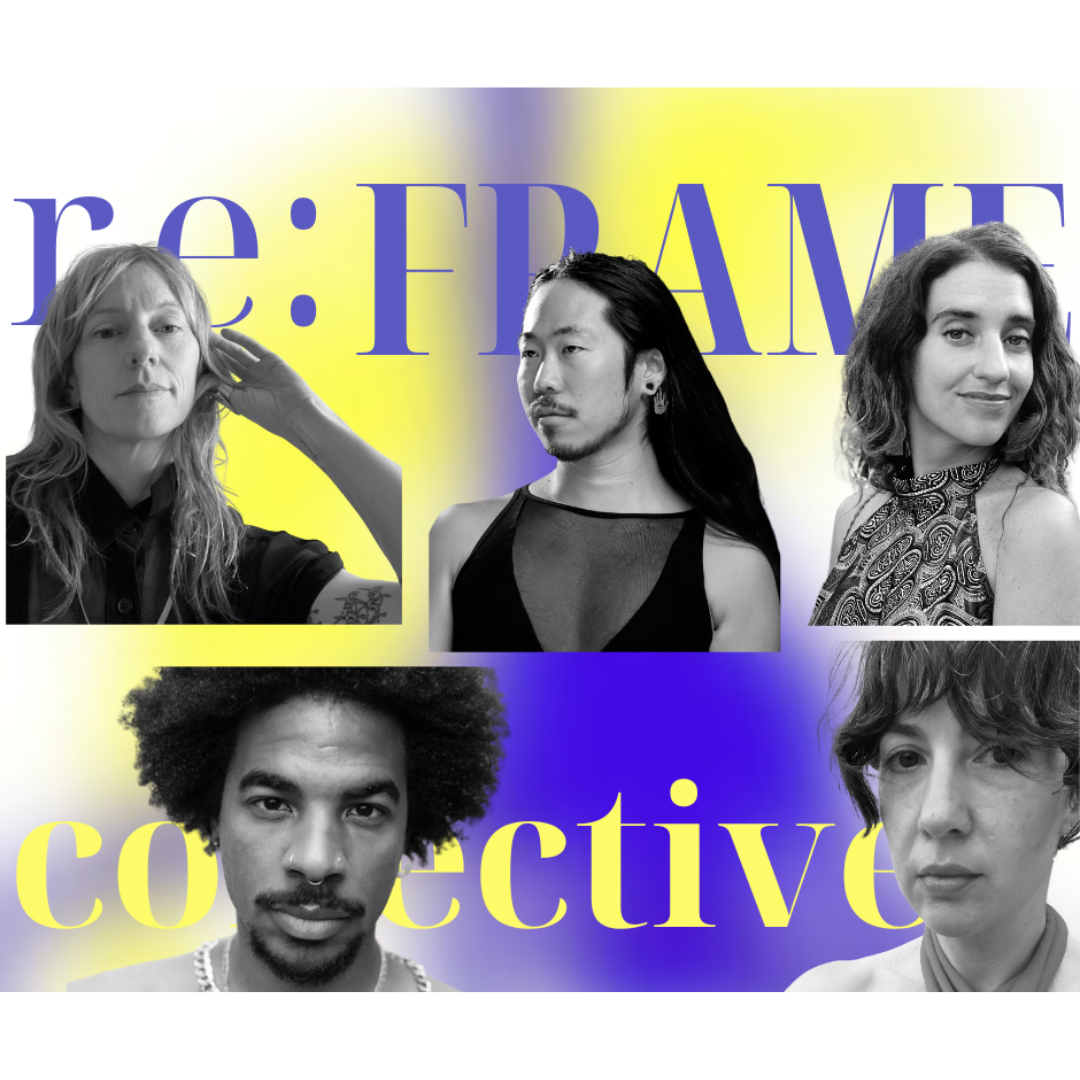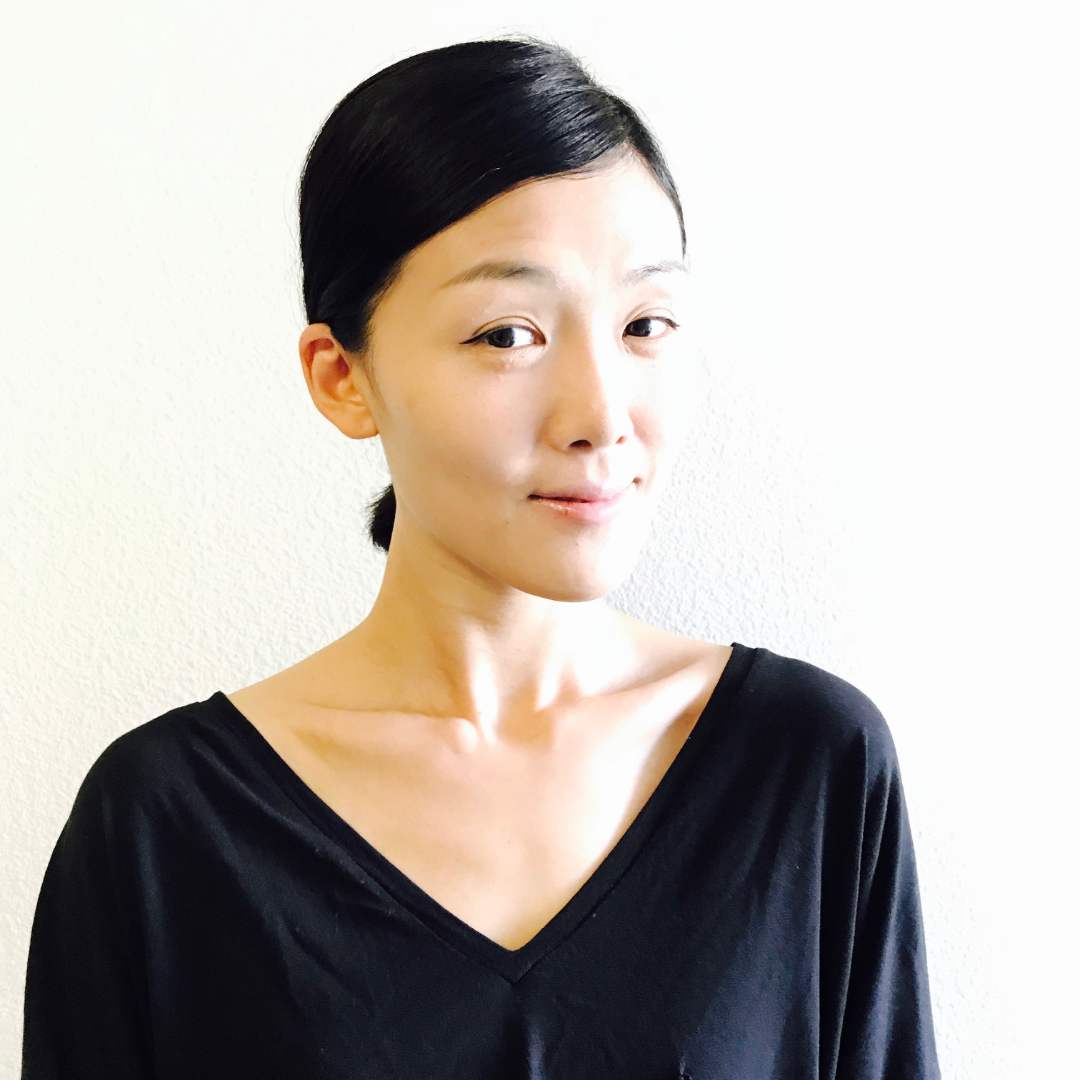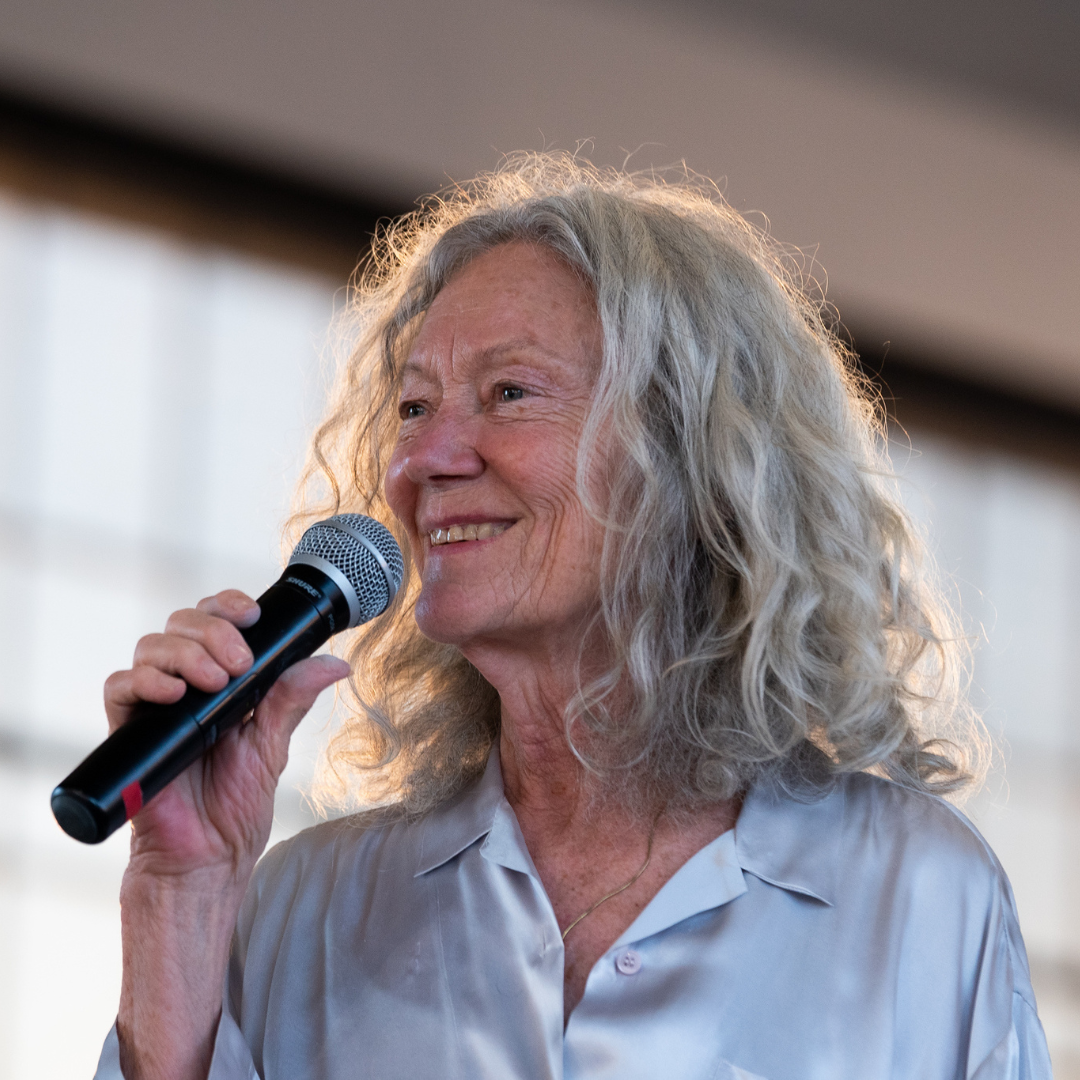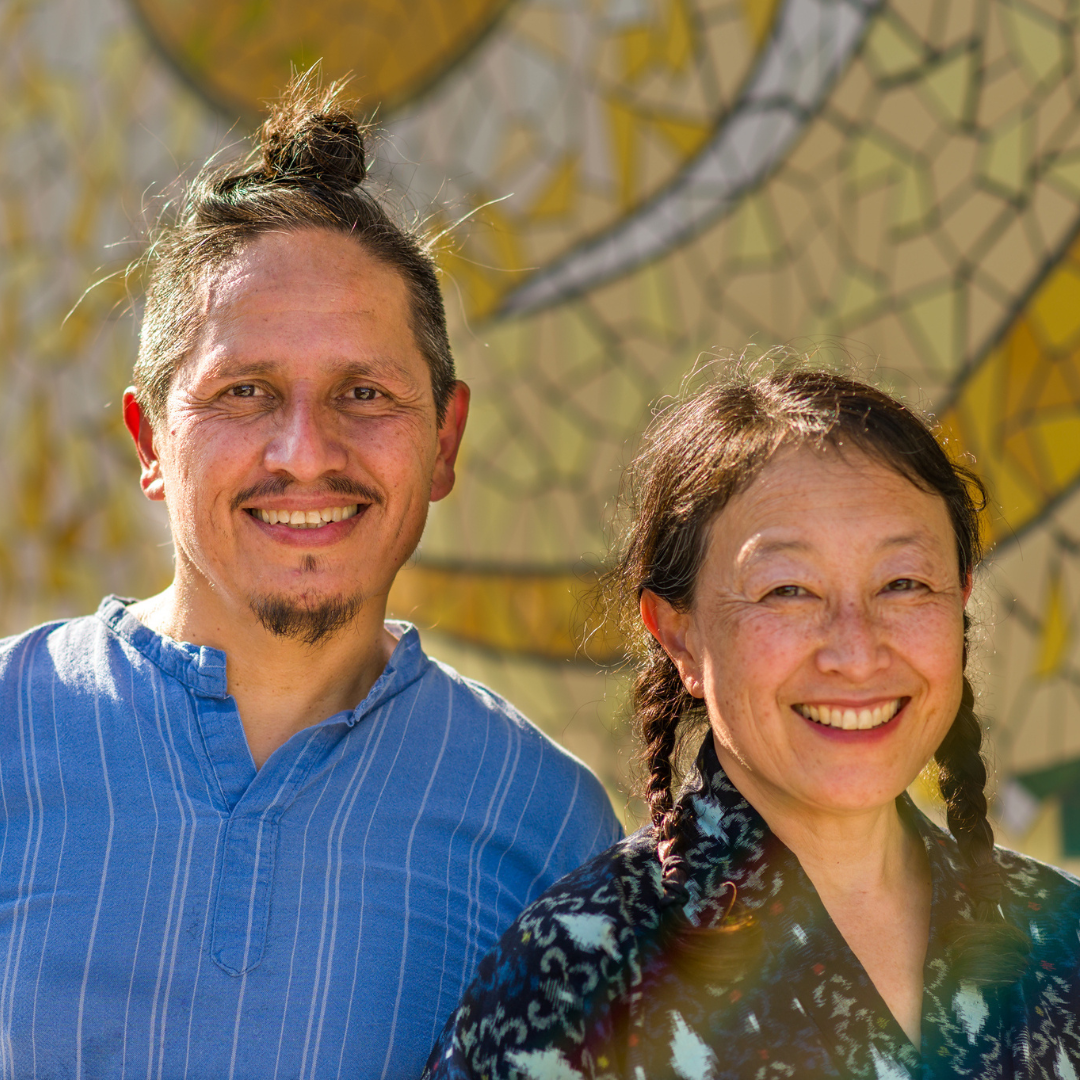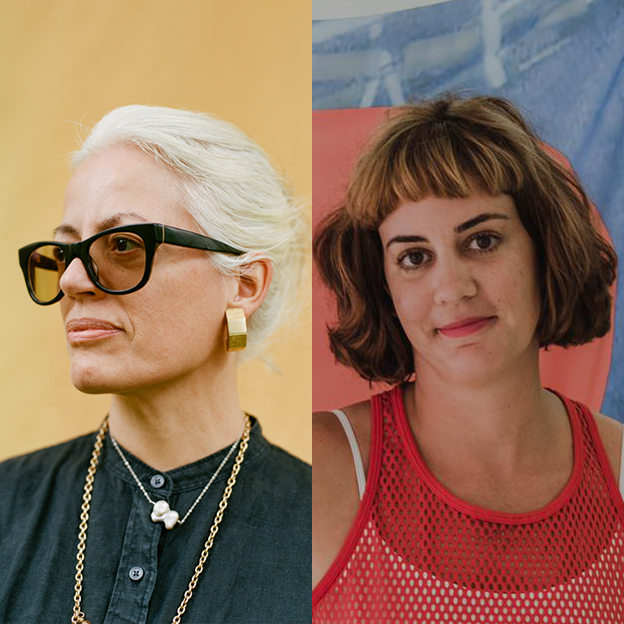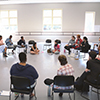McKnight Artist Fellow | February 25 - March 5, 2018 // April 14 - 20, 2018
Weave
Known for her work that unifies physical movement with time-based media, sound, and objects, Rosy Simas’ (Seneca, Heron Clan) choreography unites cultural ideas and images with scientific theories to build narratives that are both literal and metaphoric. Simas came to MANCC to develop Weave, a work that honors the interwoven and interdependent nature of our world. In this work, individual histories are woven into a performance that envelops the audience in an immersive experience of story, dance, moving image, and sound.
For many Native people, weaving is a way of life, an individual and communal act in which cultural stories and tribal knowledge are conveyed. Stories within cultural materials seem invisible, intangible, until they are made and shared. Weave will craft stories though Simas’ embodied lens as a Native feminist movement and image-maker. The work will be created in a site-specific way for each community to which it tours. For Simas, site-specific means more than location. It is the community that occupies the space, the territory, and the Native history of the place.
“When Native artists create work for Native audiences—a natural process prior to colonization—we disrupt expectations about who is deemed worthy and appropriate to receive the gift of art. When broader audiences are welcomed into that space of creation, alongside Native people for whom the work was created, there is a deepened intimacy, a conversation shared, the universe revealed through the specific.” – Simas
Simas asks critical questions regarding her relationship to the Native communities she is engaging, her relationship to non-Native audiences, and what it is to create dance for western constructs from a Native worldview.
“What can Native cultures teach non-Native audiences about art in less transactional, and more relational ways? How can I interrupt normative notions that performance by Native artists and artists of color must merely educate people? How can we break barriers between people of different experiences to diminish the cultural voyeurism that can happen when less diverse audiences engage the work of Native choreographers and choreographers of color?”– Simas
Simas’ work employs a Native circular model of creation (birth-life-death-birth). She works with other artists cyclically (research-rehearsal-performance-research), engaging Native and non-Native community participation in multiple cities. Simas continually loops in new information, allowing her to disrupt conventional performance expectations by making work that is always evolving, with local audience interactions continually reshaping the work.
Simas came to MANCC for two one-week residencies in the Spring of 2018 to develop Weave. In her first residency, Simas’ entire collaborative team came together in the studio for focused time to develop cohesion within the group. She also met jointly with Dr. John Lowe, Director, and Dr. Melessa Kelley, Post-Doctoral Scholar, at FSU’s Center for Indigenous Nursing Research for Health Equity. This meeting supported Simas’ personal mandate to center Native and indigenous voices in her work. To do this, Simas engages with Native people in every community where her work is created and presented. The first residency also included an informal work-in-progress showing attended by students and faculty of the FSU School of Dance, and members of the local indigenous community.
As a part of MANCC’s Embedded Writers Initiative, Simas and her collaborators were joined by Heid E. Erdrich and Ahimsa Timoteo Bodhrán in the first residency. This initiative, funded by The Andrew W. Mellon Foundation, is designed to support the re-imagining of dance writing conventions in order to better respond to and engage with a wider range of ever-evolving contemporary forms.
For her second residency, Simas returned alone to develop movement vocabulary for the work. She continued to develop relationships with local indigenous people, this time meeting with Susan Anderson (Creek) and Roy Stanley (Cherokee), who are known locally as indigenous rights activists.
Both residencies were supported, in part, by a partnership with McKnight Choreography Fellowships, funded by The McKnight Foundation and administered by The Cowles Center For Dance & The Performing Arts.
Collaborators in Residence: Ahimsa Timoteo Bodhrán [Writer], François Richomme [Composer], George Stamos [Performer], Heid E. Erdrich [Writer], Pramila Vasudevan [Dramaturg], Sam Mitchell [Performer], Valerie Oliveiro [Performer], Zoë Klein [Performer]
